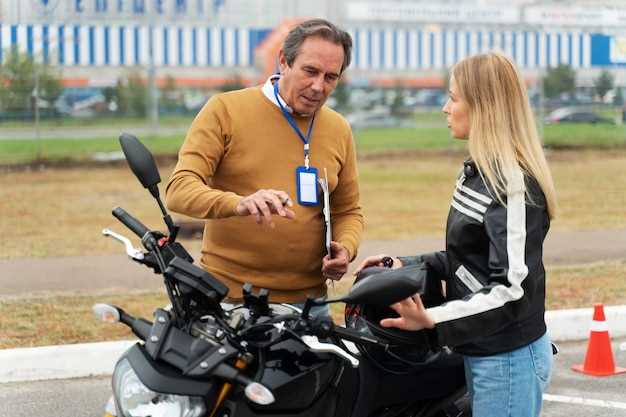

Riding in a group can greatly enhance the experience of any cyclist, providing not only camaraderie and motivation but also an opportunity to share knowledge and skills. However, to ensure a safe and enjoyable journey for all participants, it is essential to adhere to specific etiquette guidelines and rules. Understanding and respecting these rules will help maintain harmony within the group while minimizing the risks associated with riding in close proximity to others.
Group riding involves a unique set of dynamics that differ significantly from solo riding. Cyclists must learn to communicate effectively, maintain appropriate spacing, and be aware of their surroundings. By following established group riding rules, such as staying in a single file and signaling turns and stops, participants can create an environment conducive to both safety and enjoyment. This article will outline key principles of group riding etiquette, ensuring that every cyclist can partake in the adventure while remaining safe on the road.
Maintaining Safe Distances and Communication Signals

When participating in group riding, maintaining safe distances between riders is crucial for both safety and enjoyment. A general rule of thumb is to keep at least two bike lengths between each rider in normal conditions. This distance allows for ample reaction time in case of sudden stops or obstacles. In adverse weather conditions, such as rain or fog, it’s advisable to increase this distance to provide additional safety.
Riders should also be aware of their surroundings and the behavior of those around them. When group riding, it’s essential to maintain a consistent speed and follow the leader’s pace to avoid gaps that can disrupt the flow. If a rider finds themselves too close to another, they should adjust their position gradually rather than making sudden movements that could lead to collisions.
Effective communication is another vital element for safety in group riding. Hand signals and verbal cues can alert fellow riders to various situations, such as obstacles, turns, or the need to slow down. For example, using a left hand to point downwards can indicate a pothole, while raising the hand may signal to stop. Riders should establish these signals before the ride and practice using them efficiently.
Maintaining eye contact is also important during group riding. Riders should naturally look ahead to anticipate potential hazards and frequently glance at their companions to ensure everyone is aware of the ride dynamics. This kind of non-verbal communication helps foster a sense of unity and safety among riders.
In summary, maintaining safe distances and employing clear communication signals are essential practices that contribute significantly to the safety and enjoyment of group riding. By adhering to these principles, riders can ensure a smooth and pleasurable experience for everyone involved.
Navigating Turns and Intersections in a Group
When riding in a group, navigating turns and intersections requires heightened awareness and communication among all members. The leader should signal intentions well in advance to ensure that everyone is prepared for the change in direction. Hand signals and verbal commands play a crucial role in enhancing safety during these maneuvers.
Before approaching a turn, riders should position themselves appropriately within the group, allowing for enough space to execute the turn safely. Riders on the inside of the turn must slow down as they have a tighter radius, while those on the outside can maintain their speed. Consistency in speed helps prevent sudden movements that could lead to accidents.
At intersections, it is essential to establish a clear protocol to follow. The group should come to a complete stop at stop signs or traffic lights, allowing time for all members to regroup. The leader should assess the situation and signal when it’s safe to proceed. When navigating multi-lane intersections, the group should remain in a staggered formation to maximize visibility and avoid collisions.
If the group gets separated during a turn or at an intersection, the rear riders need to maintain their course while ensuring that they clear the intersection safely. It’s advisable to have a designated “sweep” rider who monitors the back of the group, ready to assist if anyone falls behind or encounters difficulty.
Finally, regular group riding practice sessions can help familiarize all members with these processes, fostering confidence and enhancing overall enjoyment during rides. Every member must stay vigilant and communicate effectively to navigate turns and intersections safely in a group setting.
Establishing Group Roles and Responsibilities

In the context of group riding, clearly defined roles and responsibilities are essential for maintaining safety and ensuring a pleasurable experience for all participants. Establishing etiquette among riders helps streamline communication and fosters a cooperative atmosphere.
The group leader plays a pivotal role in setting the tone for the ride. This individual is responsible for mapping out the route, setting the pace, and ensuring all riders are equipped and prepared. The leader must also communicate important safety information at the start of the ride and remain aware of all group members throughout the journey.
A tail rider, often referred to as the sweep, has the responsibility of monitoring the rear of the group. This rider ensures that no one is left behind, particularly when taking breaks or after unexpected incidents. The tail rider also communicates with the group leader regarding any issues or emergencies that may arise.
It is equally important for each rider to take personal responsibility for their own safety as well as that of others. Riders should maintain situational awareness, adhere to speed limits, and understand hand signals to communicate turns or stops with the group effectively. Each participant must respect the riding etiquette to avoid unsafe behavior that could jeopardize the entire group.
In addition to the primary roles, assigning individuals for specific tasks, such as navigation or first aid, can further enhance the group’s efficiency. By delegating responsibilities, riders can ensure that everyone’s strengths are utilized and that safety measures are always in place.
By establishing clear roles and responsibilities, a group can ride harmoniously, ultimately leading to a safer and more enjoyable experience. Adhering to these guidelines fosters mutual respect and enhances the overall dynamics of group riding.
